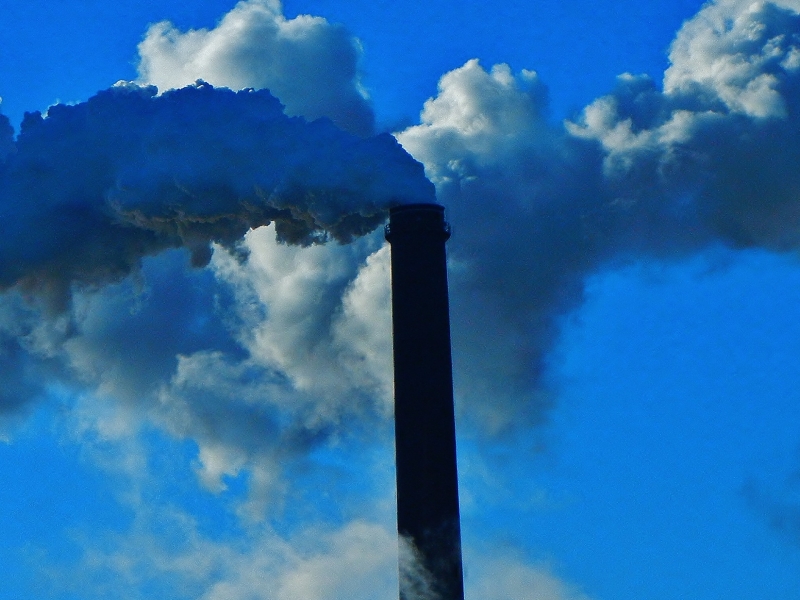Last month, Trump Administration officials attended the latest round of U.N. climate negotiations in Bonn, Germany, but they weren’t there to discuss reducing emissions. Rather, they touted the promises of nuclear energy, natural gas, “clean coal,” and carbon capture. This is not surprising, given the President’s views on climate policy and his decision to withdraw the United States from the Paris Agreement. But even had Trump decided otherwise, the current Agreement does not do enough to reduce the risk of catastrophic climate change. As we noted in a blog post this past summer, many see “deep decarbonization” as the only path to meeting the Paris goal of holding global warming to “well below 2° Celsius.”
 According to the Deep Decarbonization Pathways Project (DDPP) and the United States Mid-Century Strategy for Deep Decarbonization issued by the White House in November 2016, carbon capture and sequestration (CCS)--capturing carbon dioxide from power plants, transporting it, and then depositing it where it will not enter the atmosphere, normally underground--can play a major role in reducing greenhouse gas emissions in the United States. In the December issue of ELR’s News & Analysis, Wendy B. Jacobs and Michael Craig offer an in-depth look at CCS in a piece excerpted from the forthcoming ELI Press anthology, Legal Pathways to Deep Decarbonization in the United States.
According to the Deep Decarbonization Pathways Project (DDPP) and the United States Mid-Century Strategy for Deep Decarbonization issued by the White House in November 2016, carbon capture and sequestration (CCS)--capturing carbon dioxide from power plants, transporting it, and then depositing it where it will not enter the atmosphere, normally underground--can play a major role in reducing greenhouse gas emissions in the United States. In the December issue of ELR’s News & Analysis, Wendy B. Jacobs and Michael Craig offer an in-depth look at CCS in a piece excerpted from the forthcoming ELI Press anthology, Legal Pathways to Deep Decarbonization in the United States.
CCS technology has been the subject of years of study. As of mid-2017, it was in use at 17 large-scale industrial and power generating facilities in the United States and elsewhere. Another three facilities are expected to come online by 2018. And most major point sources of carbon dioxide emissions in the United States are situated within a manageable distance from areas that could host pipelines and sequestration facilities.
Yet widespread adoption of CCS in the United States has not occurred, largely due to the high cost of capturing and compressing carbon dioxide at power plants and the uncertain extent of potential liability and cost associated with sequestration. The absence of a strong national legislative or policy driver poses another obstacle; a national price or cap on CO2 emissions would drive the technology forward across multiple industrial sectors in the United States. A third hurdle to adoption of CCS is the low price of natural gas combined with the current federal regulatory regime, which together incentivize near-term construction of natural gas combined-cycle (NGCC) plants with no CCS.
In addition, the existing pipeline infrastructure for transporting captured carbon dioxide from its source to suitable sequestration facilities is insufficient in both location and size. And low oil prices pose a significant challenge to private investment in such pipelines, making it uneconomic to transport carbon dioxide to existing oil fields for use in enhancing oil recovery.
Jacobs and Craig assert that significant legal reforms, including a combination of financial incentives, mandates, and other forms of government support, are needed to drive full-scale diffusion of CCS technology in the United States. In addition to describing CCS’ potential for decarbonizing the U.S. power sector and explaining its key components, the authors recommend a variety of measures to expand its deployment on coal-fired and NGCC plants. The recommended reforms would not only require the use of CCS at both types of plants, but would also facilitate the sale of and help create markets for the higher-cost electricity generated by CCS-equipped plants and provide substantial investment in CCS and its associated infrastructure.
Given that national and state investment in and support of CCS are consistent with the Trump Administration’s stated goals to invest in infrastructure projects, continue U.S. reliance on fossil fuels, and create jobs, Jacobs and Craig conclude, the time may be ripe to drive CCS forward.
The article is available for download here.
ELI is making this featured News & Analysis article available free for download. To access all that ELR has to offer, including the full content of News & Analysis and its archive, you must have a subscription. To learn more, visit www.elr.info.
